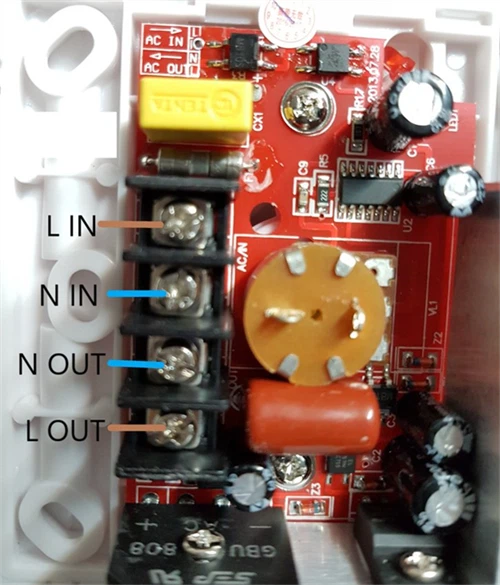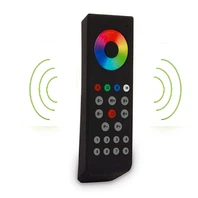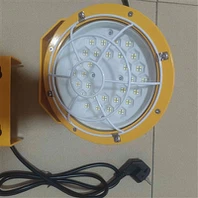TRIAC Dimming: A Complete Guide for LED Lighting Control
In the world of lighting control, TRIAC circuits have established themselves as a fundamental technology for AC power regulation. These semiconductor devices excel at switching high voltages and controlling significant current levels across both halves of the AC waveform, making them particularly valuable for dimming applications in both residential and commercial settings.
 Understanding TRIAC Technology
Understanding TRIAC Technology
TRIAC, which stands for Triode for Alternating Current, functions as an efficient power control switch. When applied to lighting systems, it's commonly known as 'TRIAC dimming'. This technology operates through a gate electrode that activates when either a positive or negative voltage is applied, allowing precise control over electrical conduction.
Key Advantages of TRIAC Control
The primary strength of TRIAC circuits lies in their ability to handle high voltages while requiring only minimal control currents. This makes them exceptionally suitable for diverse applications including:
Domestic lighting dimming
Fan speed regulation
Small motor control
Various AC switching scenarios
Their versatility and reliability have made TRIAC controllers a popular choice for everyday lighting control needs.
TRIAC in Modern LED Applications
For LED lighting systems, TRIAC dimming works by regulating light intensity through phase control. When activated, the controller reduces power conduction, resulting in dimmed illumination. Specialized TRIAC-dimmable power supplies are designed specifically to work with triac dimmer switches, featuring aluminum casings for optimal heat dissipation.
Available in various wattages (10W, 25W, 50W, 75W), these power supplies provide straightforward control for:
LED tape lights
Under-cabinet lighting
LED fixtures
Other LED applications
Installation and Compatibility
Wiring TRIAC dimmers to LED drivers requires careful attention. The most common configuration uses a standard forward phase dimmer comprising a TRIAC and resistance circuit. The resistance is managed by a potentiometer, while an RC circuit controls the delay before TRIAC activation (known as the firing angle).
Critical compatibility considerations:
Leading-edge dimmers (TRIAC-based) were originally designed for incandescent and halogen bulbs
Trailing-edge dimmers (using MOSFETs or IGBTs) offer more sophisticated control with lower minimum loads
Always verify compatibility between phase-cut dimmable LED drivers and dimmer switches before installation
Terminal Configuration and Operation
A TRIAC features three terminals: MT1, Gate, and MT2. When wired in inverse parallel configuration with a single gate terminal, current can be transmitted in either direction between MT1 and MT2 terminals, enabling effective AC power control.
Integration with Modern Systems
TRIAC technology maintains relevance through excellent compatibility with:
Home automation systems (Lutron, KNX)
Various lighting types including LED strips
Mains voltage applications (100-240V AC)
For optimal performance with TRIAC power supplies, python power cable is recommended as it facilitates DC sensor installation in AC-powered environments.
Understanding Dimming Curves
The dimming curve represents how dimmers respond to voltage output relative to control signal input. LED lights typically dim proportionally to received input in a linear relationship, creating what's known as the 'dimming curve'.
Comparison: Leading vs. Trailing Edge Dimmers
| Feature | Leading Edge | Trailing Edge |
|---|---|---|
| Complexity | Simpler, more affordable | More sophisticated, expensive |
| Load Capacity | Higher minimum load | Lower minimum load |
| Applications | General purpose, less common in LED circuits | Ideal for low-powered lighting circuits |
Practical Applications
TRIAC controllers provide both efficiency and permanence by:
Reducing and rectifying 120V AC to 12/24V DC signals compatible with LED strips
Interpreting data signals and translating instructions to LED strips
Enabling multi-purpose lighting control across different light types
Conclusion
TRIAC dimming remains a vital technology in the lighting control landscape, offering reliable performance and broad compatibility. Whether you're designing residential lighting systems or commercial installations, understanding TRIAC principles ensures optimal implementation for dimming solutions that balance performance, compatibility, and cost-effectiveness.
For professional applications, InStyle LED offers comprehensive TRIAC control solutions including 10-watt TRIAC LED drivers and single-channel receiver modules capable of controlling 12V or 24V lighting systems.







